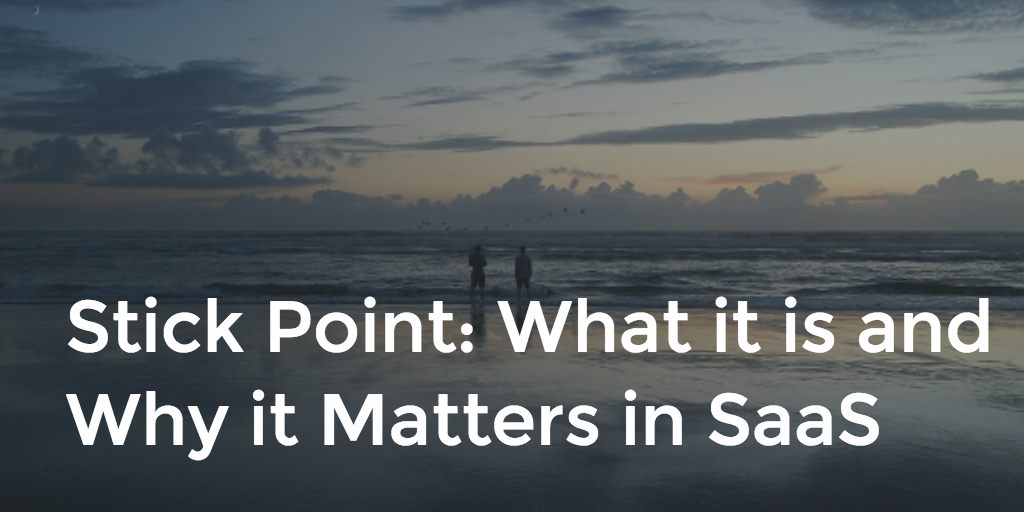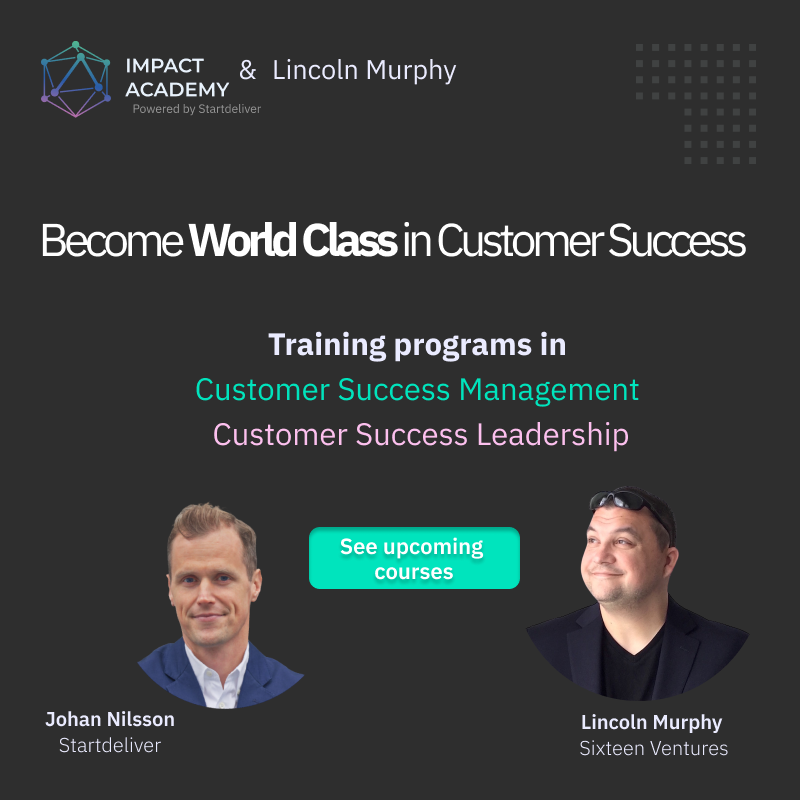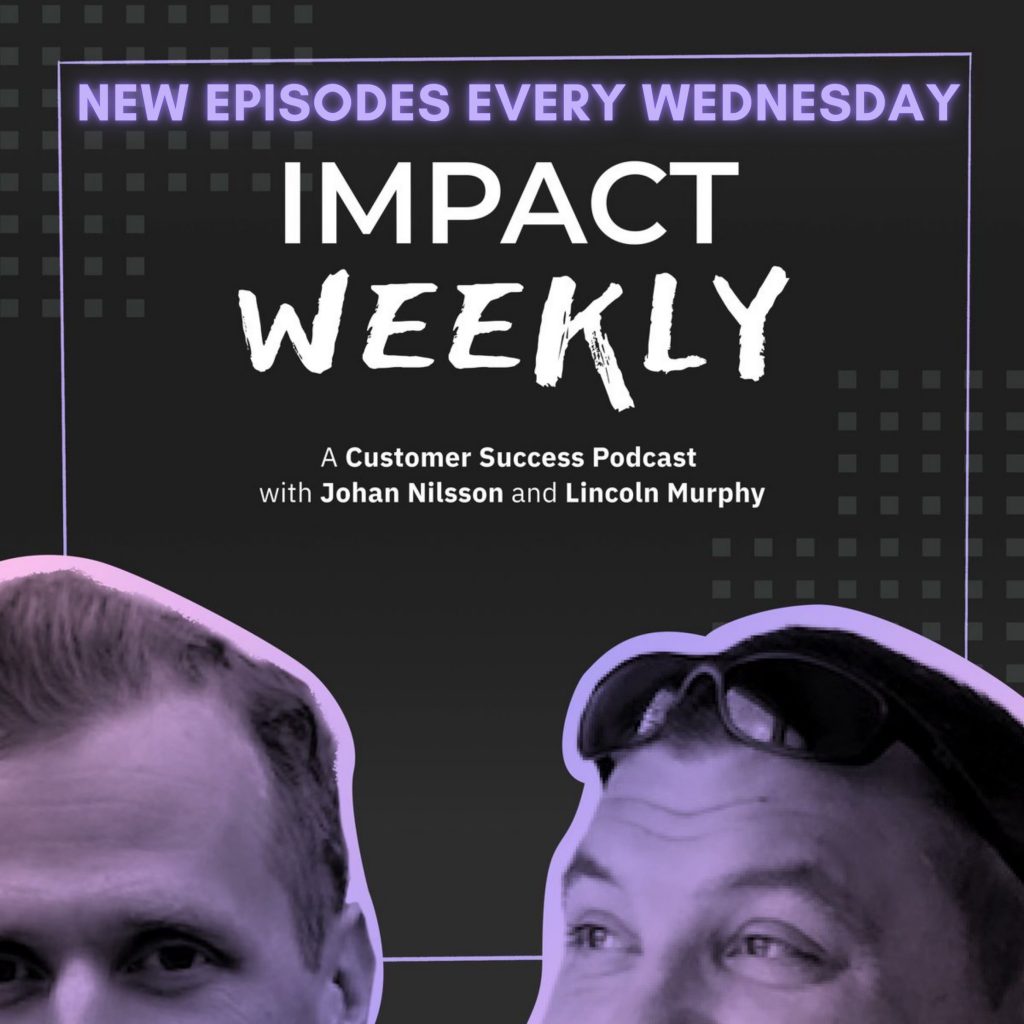 In my recent article on accurately calculating your SaaS metrics, I mentioned how some customers shouldn’t be considered customers yet.
In my recent article on accurately calculating your SaaS metrics, I mentioned how some customers shouldn’t be considered customers yet.
I referred to the fact that there’s a “stick point” or that point in time in the early part of the customer lifecycle where – if a customer makes it that long – they’ll likely stay the entire estimated or typical lifetime.
Let’s deep dive on this topic so you really understand what it is and why it matters.
Determining the Stick Point for your SaaS
The Stick Point is something that can either be determined by existing customer data or – at first – may be based solely on contract specifics, credit card refund rules, success milestones, or your gut.
While we can assume that a customer that has reached the “first value delivered” stage (the point where they hit that first Success Milestone or where they can – for the first time post-sales – see the real value potential in the product), contractual or other obligations may trump that so we’ll want to put the Stick Point there.
So even if we get the customer to First Value Delivered at 21 days in, if the stick point is 60-days due to credit card refund rules (see next paragraph), then we need to wait 39 more days before we consider them a customer.
But I want to be 100% clear: the most common Stick Point driver is your Customer’s Desired Outcome and whether or not they reached success milestones than anything financial or contractual in nature.
But, here are some financial/contractual things to consider when determining the Stick Point.
In low-touch, self-service, quick-configuration SaaS products, I’ll suggest waiting 1-2 billing cycles (60-90 days) post-conversion before I say they’re a real customer since they technically could ask for a refund and we’d be required to give it.
This is doubly important if you do anything shady like forced continuity or if you require a credit card to start your free trial; after 2-3 billing cycles it’s less likely they just forgot to cancel.
For higher-touch, more complex, or “enterprise” SaaS and Software products, the stick point could be after their 90-day “out” clause expires, after their their POC is complete, or it could be the first renewal; if they renew after the first year or renew their first contract (of a any length), they’ll likely stay the estimated or typical lifetime.
Why the Stick Point Really Matters in SaaS
The reason we care that customers that haven’t reached the stick point yet shouldn’t be considered real customers, yet, is that it helps you calculate your Annual Recurring Revenue (ARR) more realistically. If you simply figure every dollar you acquire instantly into your ARR without taking the stick point into consideration, you’ll likely be off by some (possibly significant) amount.
Of course, this only matters if you care about accuracy in what you’re reporting to stakeholders and what information you’re using to run your business. If that doesn’t matter to you, simply ignore everything I’m saying here.
The Stick Point is useful far beyond just measuring your customer metrics more accurately; it’s a way to segment the pre-stick point cohort so you can do what’s necessary to ensure they’ll make it to the stick point. The reality is, our relationship with this cohort is more fragile at this stage and we need to work diligently to get them past that stick point.
Now that You’ve Defined the Stick Point
Ultimately what the Stick Point does is help ensure you don’t rest on your laurels after making the sale, that you don’t lose momentum post-sales, and that you don’t drop the ball in the handoff from sales to post-sales org (onboarding, customer success, etc.).
It really forces you to keep your eye on the ball and ensure that customers get value in the early days of their relationship with you.
The Stick Point is something you can optimize around by focusing on onboarding and customer success, helping your customers form habits, and playing into the psychological factors of Consistency and Commitment (as put forth by Dr. Robert Cialdini in his book Influence).
I hope this helps you both calculate your customer metrics better, but also helps you get your customers to a point of success faster and keep them longer!


